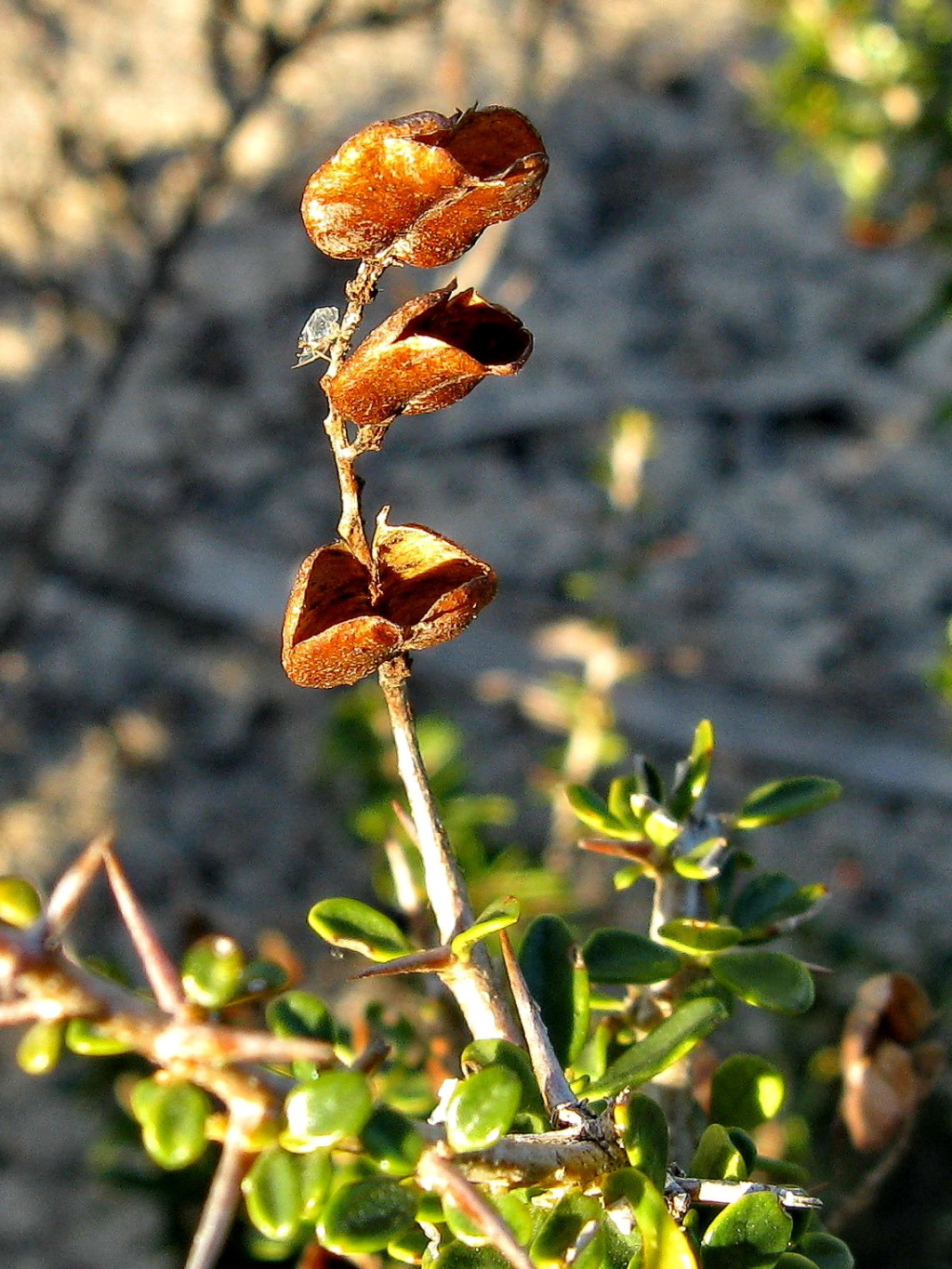Bursaria spinosa
Cav. KurwanLow shrub or tree up to c. 8 m high; branches variously spinescent, spines c. 1 cm long, young stems sometimes pubescent. Leaves alternate, those subtending spines often clustered, linear, narrowly ovate, elliptic, or broadly obovate, (4–)20–43 mm long, 2–10 mm wide; both surfaces glabrous or the upper surface glabrescent and densely pubescent below; margins entire or shallowly toothed; apex obtuse, rounded or emarginate. Inflorescence a slender to pyramidal panicle usually c. 3–12 cm long, up to 8 cm long and wide; flowers white or cream; sepals ovate or triangular, 0.5–2 mm long, caducous; petals oblong to narrowly obovate, c. 3–8 mm long; stamens subequal to petals; ovary plus style shortly exceeded by stamens. Capsule obovate to broadly obovate or obcordate, 4–8 mm long, 5–10 mm wide, brown, glabrous; seeds reniform, brown, flat, c. 3–4 mm long.
LoM, MuM, Wim, GleP, Brid, VVP, VRiv, RobP, MuF, GipP, OtP, WaP, Gold, CVU, GGr, DunT, NIS, EGL, EGU, WPro, HSF, HNF, OtR, Strz, MonT, HFE, VAlp.
2 subspecies, hairy-leaved plants were previously recognised as a distinct species.
Walsh, N.G.; Albrecht, D.E. (1996). Pittosporaceae. In: Walsh, N.G.; Entwisle, T.J., Flora of Victoria Vol. 3, Dicotyledons Winteraceae to Myrtaceae, pp. 526–539. Inkata Press, Melbourne.
 Spinning
Spinning


